Theatre Based Learning Activity for Class VI Social Science
Theatre Based Learning Activity is the need of the 21st century. NEP 2020 emphasizes experiential and joyful learning. Theatre-based education is emerging as a powerful tool to make social science engaging and meaningful. “What, Where, How, and When” – is a chapter which introduces students to the foundational concepts of the past and early human settlements. By using Theatre-Based Learning Activities, students not only understand these concepts better but also develop 21st century skills like collaboration, creativity, and communication. Enacting scenes such as conversation between archaeologists, traders, or early settlers, is not that easy for the teachers. Thus, by using Theatre Based Learning Activity, transform your classroom into a vibrant space of discovery and expression. By integrating arts in education will make history relevant to life as envisioned by the NEP 2020.
In this blog article, we are providing you creative scripts for class VI history chapter wise so that every teacher can use it in their classroom teaching. With this, make your teaching different and vibrant.
Theatre Based Learning Activity: What, Where, How, and When
Introducing “What” through a Short Theatre Script
Lets make the topic more engaging for class VI students.
This activity will make them understand the concept of “What do we study in history”.
So let’s introduce “What” through a short theatre script.
Title: “What is History?” – A Short Theatre Script
Theme: Introducing “What” we study in History
Characters: Grandfather (Dadaji), Grandson (Atharva)
[Scene: A cozy evening. Grandfather is sitting in a chair reading a newspaper. Aman walks in with his history textbook looking confused.]
Atharva: (sighs) Dadaji, I don’t understand this chapter at all. It says, “What do we study in History?” But what does that even mean?
Grandfather: (smiles) Ah, a very good question! Come, sit with me. Let me tell you a story.
Atharva: A story? But I asked about history!
Grandfather: (chuckles) And history is full of stories—real stories of real people. Do you know what we study in history?
Atharva: Umm… kings and wars?
Grandfather: Yes, that’s part of it. But we also study the lives of ordinary people—farmers, traders, soldiers, even children like you.
Atharva: Really? That sounds interesting!
Grandfather: We learn what people ate, what clothes they wore, what tools they used, what buildings they built. From palaces to pots, everything tells us a story.
Atharva: (excited) So history is not just about dates?
Grandfather: Exactly! It’s about discovering what made us who we are. Every broken coin, every old book, every monument—it all has something to say.
Atharva: (smiling) Wow, I never thought about it like that. History is like a treasure hunt!
Grandfather: And you, my dear boy, are just beginning the adventure!
Both smile. Atharva looks at his textbook with renewed interest.
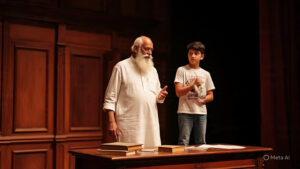
Theatre Based Learning Activity: What, Where, How, and When
Theatre Based Learning Activity: What, Where, How, and When
Introducing “Where” through a Short Theatre Script
Title: “Where Did It Happen?” – A Short Theatre Script
Theme: Introducing “Where” in History
Characters: Grandfather (Dadaji), Grandson (Aman)
Activity -I
(Scene: The next evening. Grandfather and Shweta are looking at a big world map spread across a table.)
Shweta: Dadaji, today our book asks “Where did things happen in the past?” But how do we know where things happened so long ago?
Grandfather: (points to the map) That’s another key to studying history, Aman. Where tells us the places where people lived, fought, traded, and built.
Shweta: Like where kings built their palaces?
Grandfather: Exactly! Or where the first farmers settled—like Mehrgarh—or where great cities like Harappa stood.
Shweta: But how do we find these places now?
Grandfather: Archaeologists dig up clues. Ruins, tools, bones—these show us where people once lived.
Even river valleys like the Ganga and the Indus tell us stories of civilizations.
Shweta: So where helps us put the pieces of history on the map?
Grandfather: Yes, my boy! It helps us understand why some places became important—because of rivers, fertile land, or trade routes.
Shweta: (looking excitedly at the map) Then I can travel the world by learning where history happened!
Grandfather: (smiling) And that’s the magic of history. It takes you everywhere without leaving home.
Activity -II
[Scene: The same living room, next evening. Shweta is sitting with his history notebook. Grandfather enters with a cup of tea.]
Grandfather: Aman, studying again?
Shweta: Yes, Dadaji. Today the chapter asks “Where do we find history?” It’s so confusing!
Grandfather: (smiling) Well, let’s think. Where can you find clues about the past?
Shweta: Umm… in books?
Grandfather: Correct. But not just books. Think bigger.
Shweta: Like… monuments?
Grandfather: Very good! Monuments, temples, forts, even caves. All these places tell us about history.
Shweta: (thinking) What else?
Grandfather: Old coins, inscriptions on stones, paintings on cave walls, and even ancient cities buried underground.
Shweta: Wow, so history is hidden everywhere!
Grandfather: Yes! From the highest mountains to the deepest river valleys, people left marks of their lives. That’s where we find history.
Shweta: (grinning) It’s like history is a giant map full of secrets!
Grandfather: Exactly. And you, my explorer, will find those secrets with the help of historians and archaeologists.
Shweta: I can’t wait to discover more!
Grandfather: (patting her on the back) That’s the spirit!
Theatre Based Learning Activity: What, Where, How, and When
Introducing “How” through a Short Theatre Script
Title: “How Do We Know About the Past?” – A Short Theatre Script
Theme: Introducing “How” in History
Characters: Grandmother, Grandson – Arpit
[Scene: A quiet afternoon. Aman is sitting with a notebook, thinking. Dadaji walks in with an old box full of coins and papers.]
Arpit: (looking up) Dadaji, today our lesson asks “How do we know about the past?” But the past is gone! How can we know anything for sure?
Grandmother: (smiles, opening the box) That’s what makes history exciting. We find clues—just like detectives!
Arpit: Clues?
Grandmother: Yes! Look here—this old coin. It tells us who ruled, what language was used, even how people traded.
Arpit: (examines the coin) Wow… and what’s this?
Grandmother: That’s a page from your great-grandfather’s diary. Writings, books, inscriptions—all of these help historians piece together the past.
Arpit: So historians don’t just guess?
Grandmother: No, they study how we know—by reading old texts, studying buildings, and digging up remains.
Arpit: Like how archaeologists found Harappa?
Grandmother: Exactly! Tools, seals, bones, pots—each one tells part of the story.
Arpit: (excited) So, “How” means looking for proof!
Grandmother: Yes. History is not made-up tales. It’s evidence, carefully read and understood.
Arpit: (grinning) Then I want to become a history detective too!
[They laugh as Dadaji hands Arpit a magnifying glass and the curtain closes.]
Theatre Based Learning Activity: What, Where, How, and When
Introducing “When” through a Short Theatre Script
Title: “When Did It All Happen?” – A Short Theatre Script
Theme: Introducing “When” in History
Characters: Grandfather (Usman), Grand daughter (Farida)
[Scene: A rainy evening. Farida and Dadaji are sitting by the window. Farida is flipping through a timeline chart in her textbook.]
Farida: Dadaji, now I get the what, where, and how… but when? That’s still confusing. How do we know when something happened?
Grandfather: (nods) A very important question. Time is the thread that connects all of history. Without when, everything is out of order.
Farida: But people thousands of years ago didn’t have calendars like we do!
Grandfather: True. But they left behind clues—like dates on coins, inscriptions, or references in old texts. Historians use these to create timelines.
Farida: Like BCE and CE? We read about those in class.
Grandfather: Yes. BCE means Before Common Era, and CE means Common Era. It helps us place events in sequence—like who came first: Harappa or the Vedas?
Farida: Ohh… so when helps us organize the past—like a story with a beginning, middle, and end?
Grandfather: Exactly! It tells us the age of empires, the gap between inventions, and the journey of human progress.
Farida: (smiling) History really is like solving a giant puzzle—one piece at a time!
Grandfather: And now, you have all four pieces—What, Where, How, and When. The story of history is yours to explore!
[They both look at the timeline chart together as the curtain closes.]
Theatre Based Learning Activity: What, Where, How, and When
A combined script for a class performance using all four parts.
Title: “Unlocking the Past: What, Where, How, and When” – A Combined Theatre Script
Purpose: To teach Class VI History Chapter 1 through a single engaging play using all four concepts (What, Where, How, and When)
Characters:
Aman (Curious Grandson)
Dadaji (Wise Grandfather)
(Optional) 2–3 supporting students to act as historians, archaeologists, or as live “props” for dramatizing flashbacks or objects
[Scene 1: At Home – Introducing “What”]
(Aman walks in, holding his History textbook, looking confused.)
Aman:
Dadaji, this history chapter is so strange. It’s called What, Where, How, and When… but I don’t understand even the first part! What do we even study in history?
Dadaji:
(laughs) Sit down, Aman. History isn’t just about kings and wars. It’s about what people did—what they built, what they used, what they left behind.
(Optional: A supporting student walks across stage carrying props – a pot, a scroll, a crown – to show examples.)
Aman:
So history tells us about… everything?
Dadaji:
Exactly! From farmers to fighters, from pots to palaces—everything is part of our past.
A Combined Theatre Script Introducing “Where”
[Scene 2: Map Table – Introducing “Where”
(They walk over to a large map on a table or wall.)
Aman:
Then Dadaji, where did all this happen?
Dadaji:
Look at this map! People lived along rivers like the Ganga and Indus. They built cities like Harappa and traded across mountains and seas.
(Optional: Another student acts as a Harappan trader, showing goods or pointing to the map.)
Aman:
So we study the places where history happened?
Dadaji:
Yes, Aman. The where helps us trace how people chose their homes, travelled, or made connections.
A Combined Theatre Script Introducing “How”
[Scene 3: History Box – Introducing “How”]
(Dadaji opens a small box filled with old coins, papers, or mock artifacts.)
Aman:
But Dadaji… how do we know all this? It’s not like we were there!
Dadaji:
That’s where historians and archaeologists come in. They find how we know—through books, coins, buildings, even bones!
(Optional: A student enters dressed as an archaeologist, dusting off a mock artifact.)
Aman:
So these things are like clues from the past?
Dadaji:
Yes! Each one tells a small part of a big story.
A Combined Theatre Script Introducing “When”
[Scene 4: Timeline Chart – Introducing “When”]
(They now sit near a timeline chart or calendar on the wall.)
Aman:
Now I just want to know when all this happened. It’s like a big mystery!
Dadaji:
History is also about when. We use timelines—BCE and CE—to arrange events in order. It’s like sorting chapters of a book.
Aman:
So we can see when cities were built or rulers came and went?
Dadaji:
Exactly! When helps us understand change—what came early, what came later.
[Final Scene: Reflection]
Aman:
Now I get it—history is not just facts. It’s a journey! First, we ask what, then where, then how, and when. That’s how we unlock the past!
Dadaji:
(smiling proudly) You’ve got it, Aman. And this is just the beginning. The past has many stories. All we need are curious minds to discover them.
(Lights dim as they both look at the timeline/map. Curtain closes.)
Theatre Based Learning Activity: What, Where, How, and When
Conclusion:
History instruction is changed from passive reading to active investigation through theater-based learning. Students gain a deeper understanding of important historical concepts as well as increased empathy, critical thinking, and engagement through the dramatic presentation of What, Where, How, and When. Instead of memorizing the past, students experience it by taking on the roles of historians, archaeologists, and ancient people. This approach fosters creativity, teamwork, and communication and is consistent with NEP 2020’s emphasis on experiential and integrated learning. Theater makes difficult subjects understandable, gives life to abstract concepts, and fosters a happy, student-centered learning environment. In the end, it enables young minds to view history as a meaningful narrative of human progress that they can relate to and learn from, rather than as a list of dates and events.
Did the script helped you in conducting classroom activity? Do comment and give me your honest feedback.
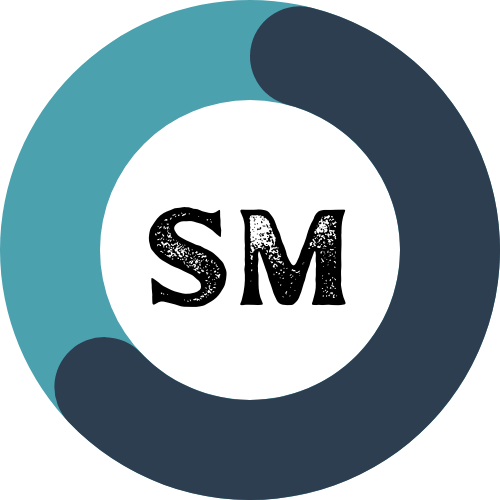

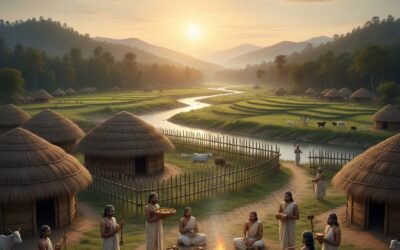
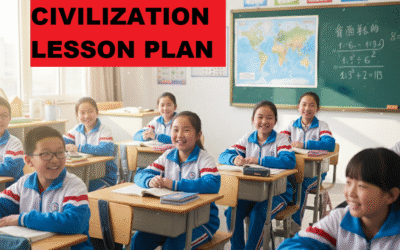
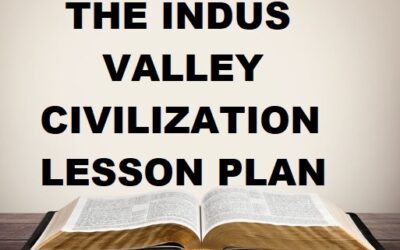
0 Comments